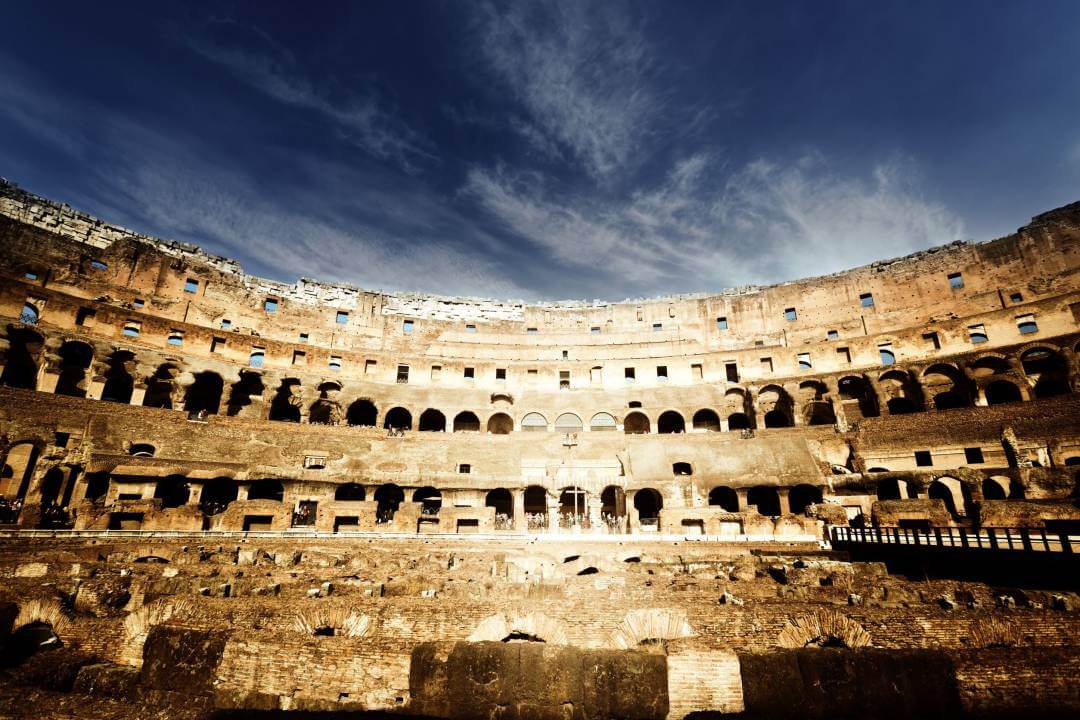Colosseum Underground Tour with Arena Floor is the dream of many.
Get ready to embark on a journey through time to the belly of the beast that is the Colosseum.
Hold on to your togas and prepare for an adrenaline-fueled ride through history. Not to mention the hidden secrets of the Colosseum Underground and Arena!
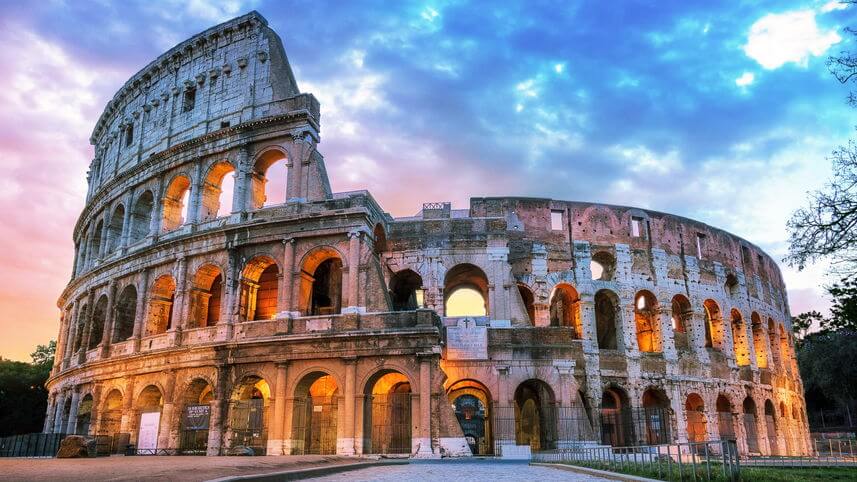
We’re about to take you on a tour of one of the world’s most famous landmarks. Where brave gladiators fought to the death and wild beasts roared in the darkness.
We’ve got all the fascinating facts and juicy tidbits to satisfy your inner history buff. From the construction of this ancient marvel to the blood-soaked events that took place within its walls.
So let’s grab helmets and explore the captivating world of the Colosseum Underground and Arena!
Roman Colosseum: Where Every Stone has a Story to Tell
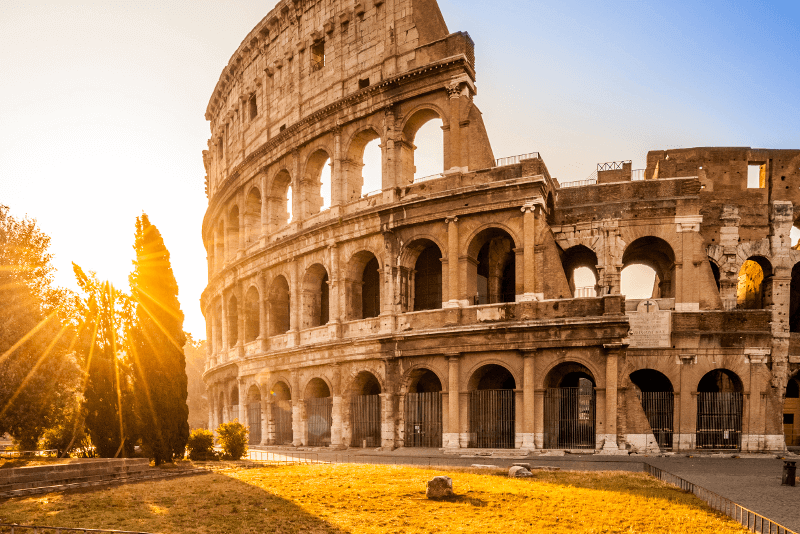
The Roman Colosseum is a remarkable feat of engineering. It was designed and built to hold up to 80,000 spectators who would gather to watch an array of exciting events.
It has stood for over two thousand years as a testament to the ingenuity and creativity of the ancient Romans. Its iconic shape and massive scale are still impressive to behold.
Even today, the Colosseum remains a symbol of the power and endurance of ancient Rome. It draws millions of visitors from around the world each year.
The amphitheater’s impressive design and construction techniques have inspired architects and engineers for centuries. It continues to be a source of inspiration and fascination for people around the globe.
When you take Colosseum tours, you can’t help but be struck by the sheer size and scale of the structure. It’s difficult to imagine how such a massive building was constructed with the limited technology available at the time.
Yet, the Colosseum stands as a testament to the creativity and resourcefulness of the Romans. Who was able to create something truly extraordinary.
Whether you’re interested in history or architecture. Or simply looking to marvel at one of the world’s most impressive structures, the Roman Colosseum is a must-see destination.
So why not step back and experience the wonder of ancient Rome for yourself?
The Arena of The Rome Colosseum – Witness the Echoes of History
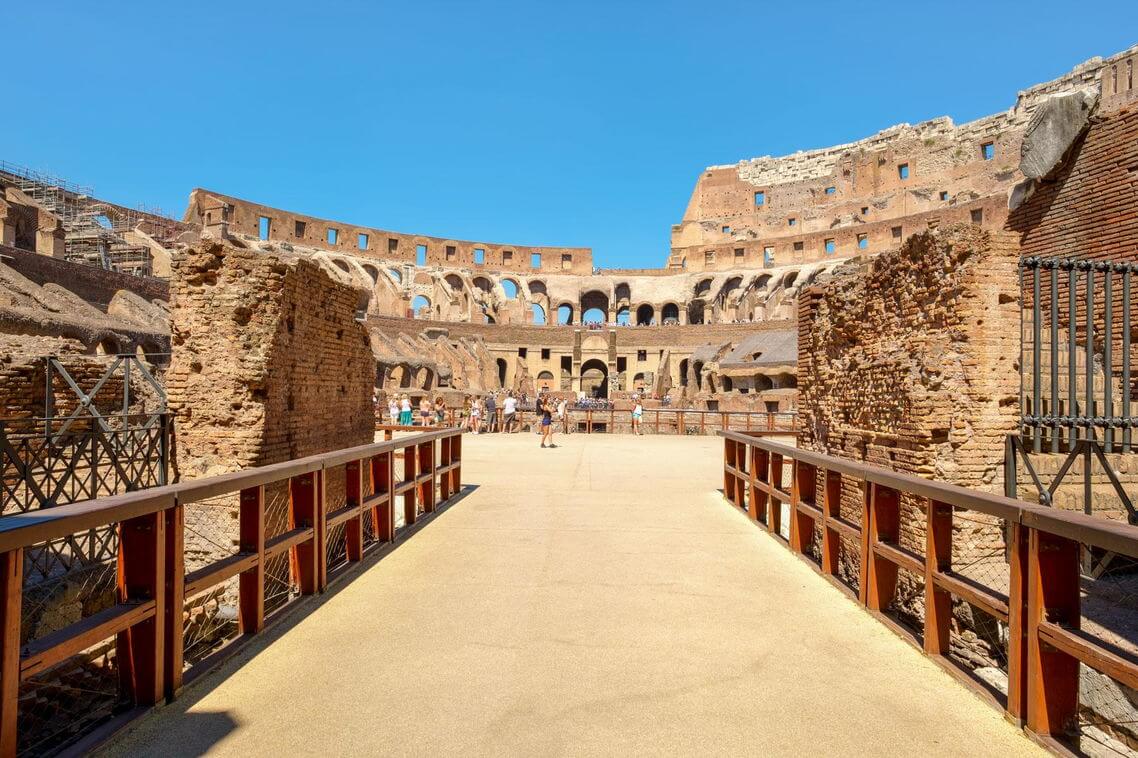
The Arena of the Rome Colosseum is a place of legend. This is the site of some of the most iconic battles and events in history.
It was here that brave gladiators fought for their lives, wild beasts roamed the sands, and charioteers raced to the cheers of thousands of spectators.
The Colosseum Arena was specifically designed to accommodate a wide range of events. Be it ancient gladiatorial games to mock sea battles.
It was built with a complex network of tunnels and elevators. That allowed the smooth transportation of people and animals between the arena and the outside world.
In its heyday, the arena was used to entertain and delight the citizens of Rome. They would flock to the Colosseum to witness thrilling battles and spectacles.
It was also a place of political power. Emperors could display their wealth and strength to the people.
But the Arena of the Rome Colosseum was not just a place of entertainment. It was a symbol of the power and endurance of ancient Rome.
It represented the strength and might of the Roman Empire. It served as a warning to those who would oppose Rome’s will.
Today, the Arena of the Rome Colosseum stands as a testament to the ingenuity and creativity of the ancient Romans.
It is a site of historical and architectural significance. Attracting visitors from all over the world who come to marvel at its grandeur. Imagine the battles that once took place within its walls.
So whether you’re a history buff, an architecture enthusiast, or simply looking to experience the thrill of the fight, the Arena of the Rome Colosseum is a must-see destination.
History of the Roman Colosseum
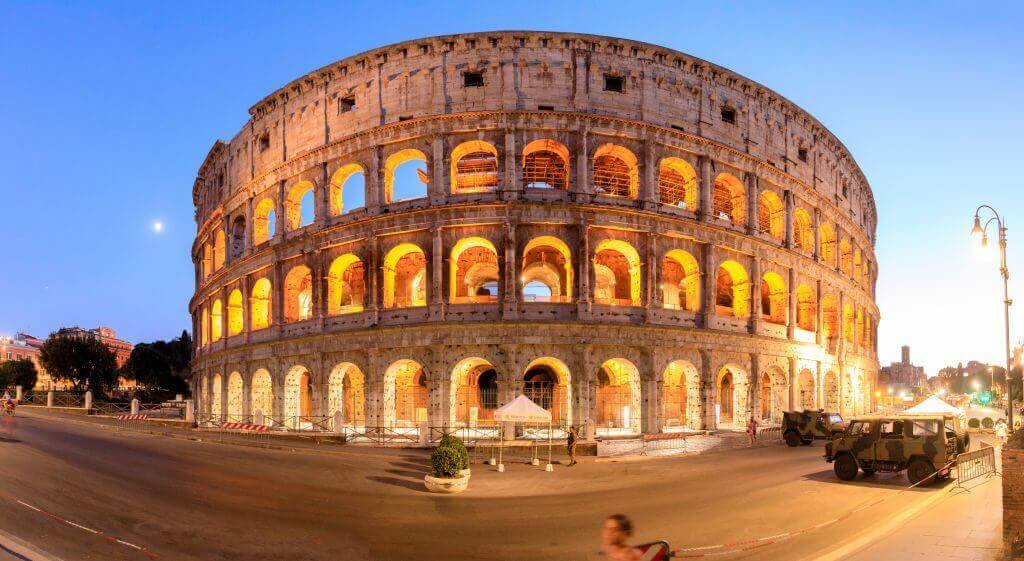
Now it’s time to behold the grand spectacle that is the Colosseum! This iconic amphitheater was completed in 80 AD. It was built to host spectacular gladiatorial contests and other public spectacles that entertained the masses.
With its impressive scale and imposing facade, the Colosseum quickly became a symbol of the power and wealth of the Roman Empire.
Its elliptical shape and towering arches, rise to heights of over 50 meters. Created a breathtaking spectacle that was unrivaled in its day.
As many as 80,000 spectators could fill the Colosseum’s seats to witness the events that took place within its walls.
Gladiators, trained in the art of combat, would battle it out with wild animals, with the roar of the crowd egging them on. Other entertainments included mock sea battles, animal hunts, and public executions.
Colosseum Construction Stages:
The construction of the Colosseum in Rome began in 72 AD and was completed in 80 AD, during the reign of Emperor Titus.
The Colosseum was designed by architects and engineers, including Gaudentius and Quintus. And built by tens of thousands of skilled laborers, including slaves and prisoners of war.
The construction process can be broken down into several stages:
- Planning and Design.
- Foundation construction.
- Outer wall construction using travertine stone.
- Seating construction using a combination of concrete and stone.
- Interior construction with a complex system of tunnels and elevators,
- And Finally the addition of decorative features such as statues and ornate stonework.
Despite being damaged by earthquakes and looting over the centuries, the Colosseum still stands as a testament to the engineering prowess of ancient Rome. Its enduring legacy as a symbol of the city’s history and heritage draws millions of visitors each year. Making it one of the most visited landmarks in Italy.
With a Colosseum Underground Tour, it will feel like a journey back in time that you won’t soon forget!
History of the Colosseum Underground
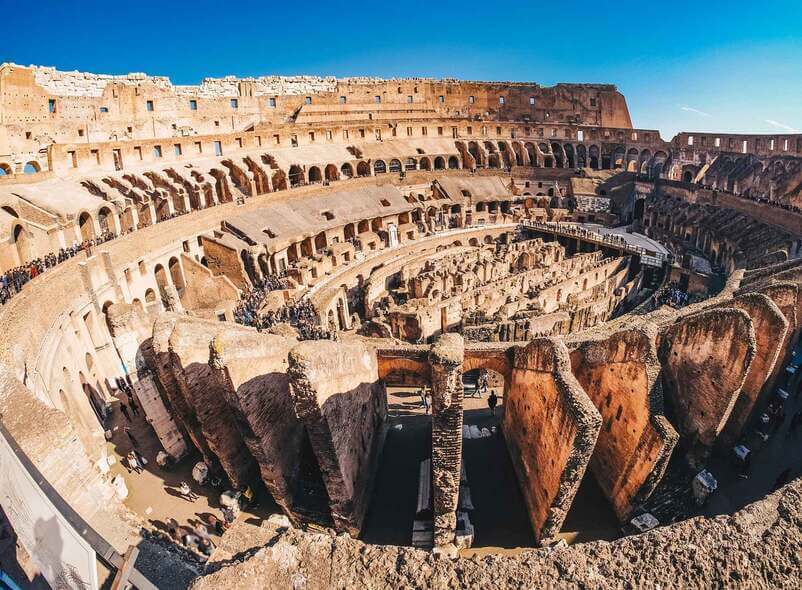
Now that you know about the Roman Colosseum, let’s deep beneath the majestic Colosseum. Ancient Rome lies a hidden world – the infamous Colosseum Underground.
Built nearly 2,000 years ago, this underground labyrinth was once the heart of the world’s most famous amphitheater. It played a critical role in the gladiatorial contests that took place above.
Originally constructed as a series of tunnels and chambers to hold animals, gladiators, and equipment. The Colosseum Underground evolved into a complex system of passages, rooms, and trapdoors. All of them added an element of surprise to the battles above.
In the dark and damp confines of the Colosseum Underground, gladiators would prepare for their battles. Wait in anticipation for their chance at glory.
They would emerge from hidden trapdoors to face wild beasts and each other, as the cheering crowds above watched in awe.
The Colosseum Underground was also the site of countless tragedies. As prisoners and slaves were forced to battle it out in gruesome and often deadly contests.
It was a place of immense cruelty and suffering. Yet it has also captured the imagination of generations. Serving as the inspiration for countless works of art and literature.
Today, visitors to the Colosseum can explore the Underground and experience the eerie atmosphere for themselves.
It’s a chance to walk in the footsteps of the gladiators and slaves who once inhabited this subterranean world. Gain a deeper understanding of the history and legacy of this iconic monument.
What was the Colosseum used for?
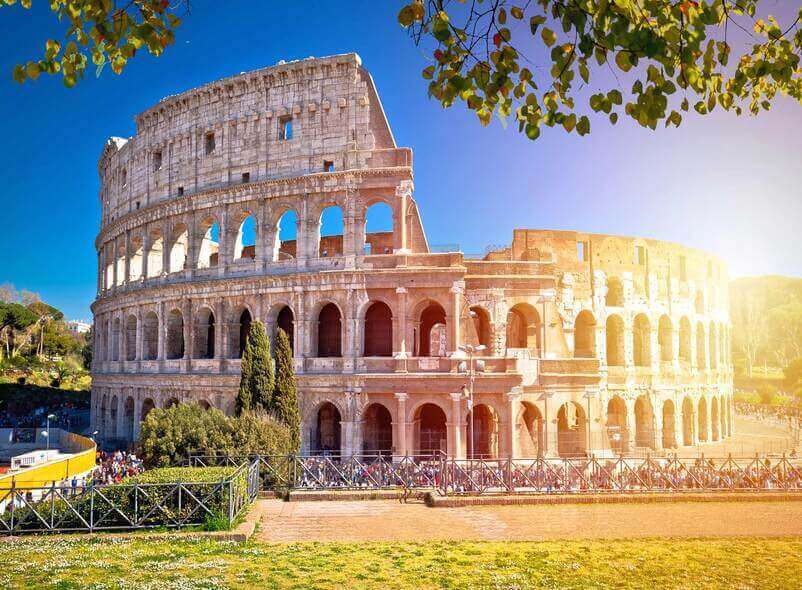
Rising up majestically from the heart of ancient Rome, the Colosseum is one of the world’s most iconic structures. This stunning amphitheater was once the center of entertainment. But what was the Colosseum used for? The answer is as fascinating as it is gruesome. Let’s find out.
The Colosseum was primarily used for gladiatorial contests. Here trained fighters would battle each other, wild animals, and even mock naval battles.
These brutal events were not only a form of entertainment but also a way for the ruling elite to control the masses.
But the Colosseum was also used for a variety of other events. Including public executions, animal hunts, and even religious festivals.
Today, the Colosseum stands as a haunting reminder of a bygone era. Its legacy continues to fascinate and intrigue visitors from around the world.
Colosseum underground used for

While most people are familiar with the brutal gladiatorial contests and other bloodthirsty spectacles that took place within the walls of this ancient amphitheater. Few know about the wild secrets of the Colosseum underground.
- Beneath the sand-covered floor of the arena lies a network of underground passages. Basically the intricate network of tunnels and corridors. Some of which have not been fully explored to this day. These underground areas were used to house animals, gladiators, and prisoners.
- The underground was also home to networks of pulleys and levers. It was used to move scenery and performers onto the stage with precision and speed.
- It was used to store equipment and props. Such as weapons, armor, and stage scenery, between events.
- Gladiators and animals would wait in the underground before their battles. Allowing for surprise entrances onto the arena floor.
- The underground contained trapdoors and hidden compartments. They used to hold prisoners and animals before they were brought up to the arena to face their fate
- Complex elevator systems were used to lift scenery and performers onto the stage. It provides a range of special effects for the audience.
- The underground contained a system of pipes and cisterns that could be used to flood the arena. It allowed for the staging of naval battles.
- There were also secret rooms for VIP guests and emperors. From there they could watch events without being seen by the general public.
But it wasn’t just living that were kept in the Colosseum underground. Legend has it that the bodies of the dead were also stored in these dark, damp catacombs. Then waiting to be dragged out of the arena and dumped unceremoniously in the nearby Tiber River.
The Colosseum underground was a place of darkness and terror. A world that was hidden from view but which played a vital role in the bloody history of this remarkable structure.
Colosseum Arena used for
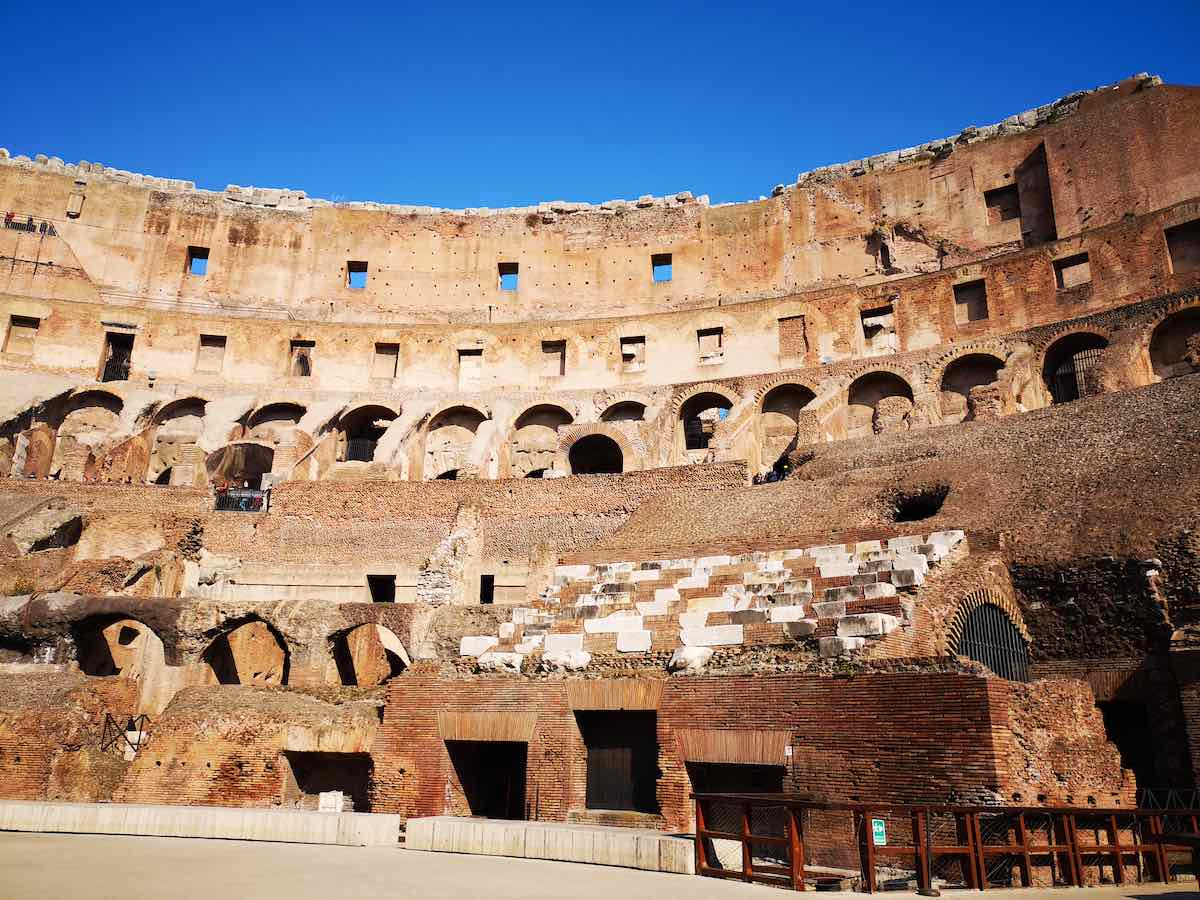
Well, Colosseum Arena Floor Tour is another famous spot after Colosseum underground tour. We already introduced you to the Arena. But it also holds some unknown secrets.
Gladiator battles: This is perhaps the most well-known use of the Colosseum arena. Gladiators, trained fighters, would battle each other in front of a roaring crowd. However, did you know that some gladiators were actually volunteers who signed up for the job?
The Colosseum arena was once flooded with water to create a miniature sea. Where naval battles were reenacted. These “naval battles” were called Naumachiae. Those battles were so realistic that they sometimes resulted in casualties.
Animal hunts: Wild animals such as lions, bears, and elephants were brought into the arena for public hunts.
These hunts were often pitted against skilled hunters. Or unarmed criminals as a form of punishment.
Mythical reenactments: In addition to real-life battles, the Colosseum was also used to reenact myths and legends.
For example, the tale of Romulus and Remus was brought to life through elaborate sets and costumes.
Public executions: The Colosseum arena was sometimes used for public executions. Including beheadings, hangings, and crucifixions. These executions were typically reserved for criminals and enemies of the state.
Chariot races: Chariot races were a popular form of entertainment in ancient Rome. And the Colosseum was no exception. The arena was specially designed with a track for chariot races. It could accommodate up to 12 chariots at a time.
Religious festivals: The Colosseum was also used for religious festivals. Such as the Roman Games, which were held in honor of various gods and goddesses. These festivals often included athletic competitions and theatrical performances.
Theatrical performances: Speaking of theatrical performances, the Colosseum was also used as a venue for plays and musical performances.
The Roman elite would often reserve special boxes to watch the performances. While the common folk sat in the stands.
Political rallies: Finally, the Colosseum arena was sometimes used for political rallies. Here politicians would give speeches to the masses.
These rallies could attract tens of thousands of people. Making the Colosseum a powerful symbol of political power.
10 Facts about Colosseum Underground and Arena
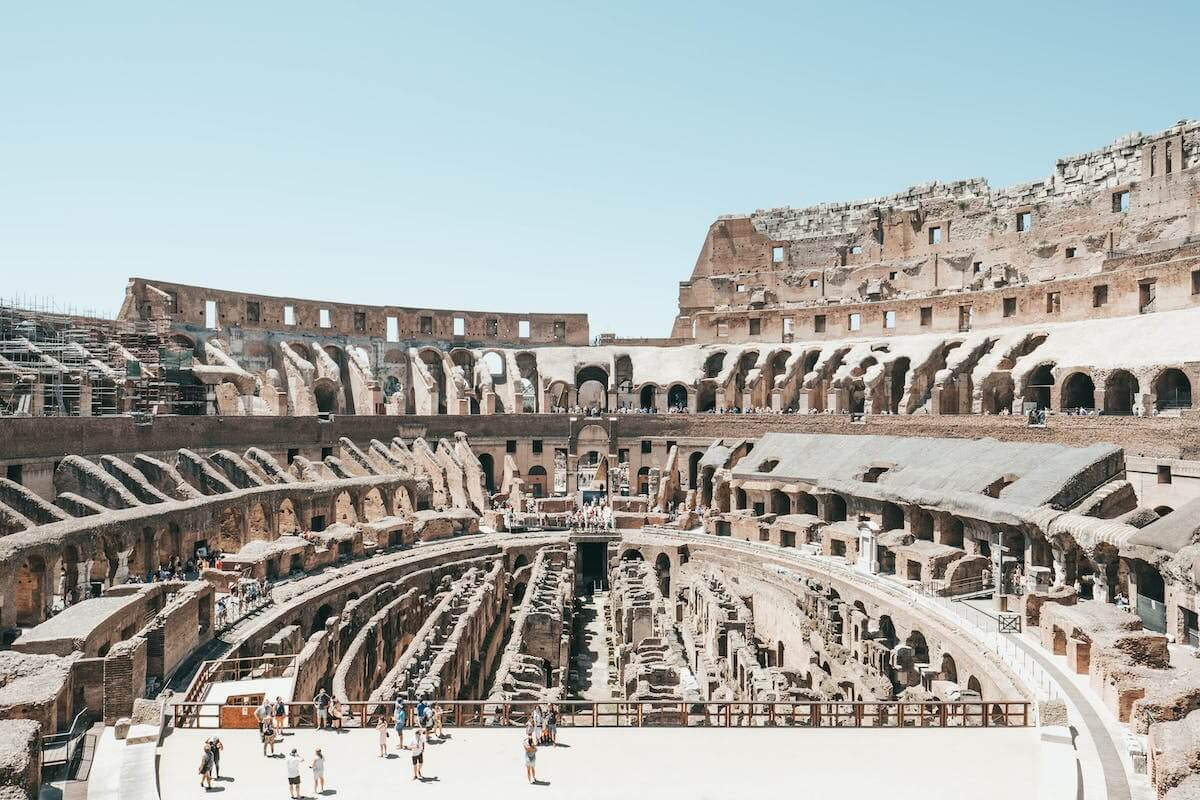
Colosseum Underground and Arena have seen some unforgettable events in history. Here we’ll be taking a closer look at the Colosseum Underground and Arena. We’ll uncover 10 fascinating facts that you may not have heard before.
1. Five Centuries of Use: Colosseum’s Surprising Endurance:
The Colosseum was in use for over 500 years before it fell into disrepair and was abandoned. It was used for everything from gladiator battles to religious festivals to public executions.
2. Financing the Colosseum:
The Colosseum was financed using spoils from the Jewish War in 70 AD. The spoils included gold and other treasures that were looted from the Temple of Jerusalem.
3. Getting Lost in the Maze Depths:
The Colosseum Underground was a maze-like system of tunnels and chambers that spanned over two levels. By booking Colosseum underground tickets you will experience it before your eyes.
4. The Building Material of Choice:
The Colosseum was built using a type of volcanic rock called tuff. This rock was both lightweight and sturdy. Which made it the perfect building material for the massive structure.
5. Theatricality and Spectacle:
The arena floor was made of wooden planks that could be easily removed and replaced. This allowed for quick changes between events. Such as switching from gladiator battles to mock sea battles. Now to mock the sea battles the arena was lined with a layer of waterproof cement. Then filled with over 3 million gallons of water.
6. Colosseum’s Velarium:
The Colosseum had a retractable awning called the velarium. It was used to provide shade for spectators on sunny days. The velarium was made of thick canvas and was supported by a network of ropes and poles.
7. From Disaster to Preservation: Ongoing Restoration
The Colosseum was once the site of a massive fire that destroyed much of the interior. The damage was so severe that the arena had to be closed for several months for repairs.
This site has been damaged by earthquakes, lootings, and other natural disasters over the years. However, it has been restored and preserved. And now remains one of the most iconic and recognizable landmarks in the world.
8. A God Among Men: The Massive Statue of Neptune:
It was once home to a massive statue of the god Neptune that stood over 100 feet tall. The statue was made of bronze. It was one of the largest ever constructed in ancient Rome.
9. Not Just a Fighting Ring:
The Colosseum Underground was sometimes used as a makeshift hospital for injured gladiators. Doctors and nurses would tend to their wounds. They provide medical care in cramped and dark conditions.
10. A Cultural Icon:
This architectural majesty inspired many works of art and literature over the years. It has appeared in everything from Shakespeare’s plays to the novel “The Count of Monte Cristo.”
Is the Colosseum Underground and Arena Tour Worth It?
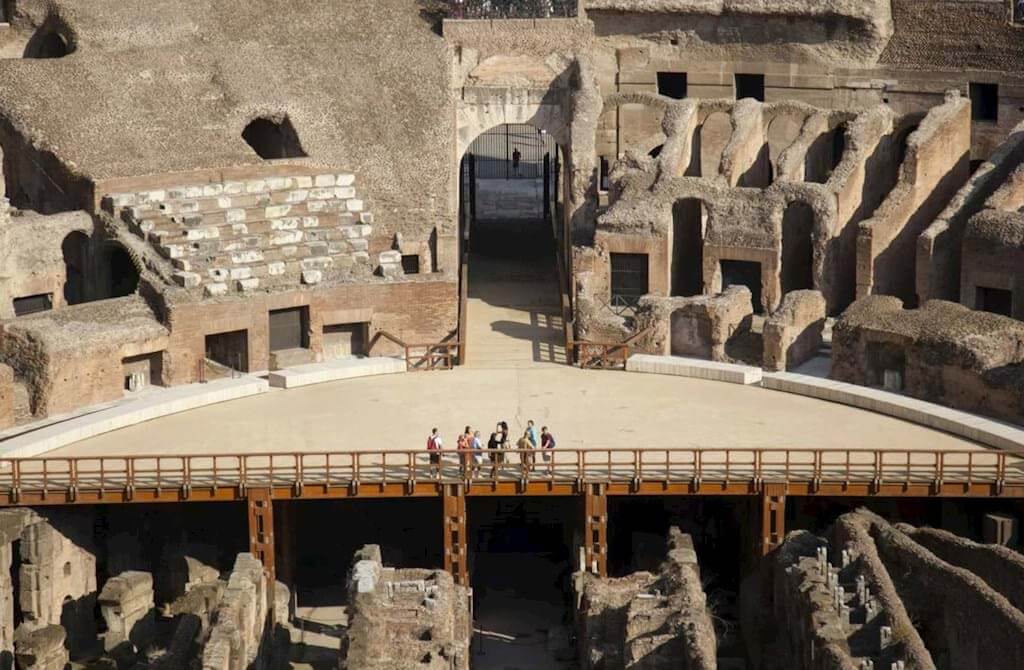
If you’re planning to take Rome Tour, chances are that a visit to the Colosseum is on your itinerary.
And while the Colosseum is an impressive sight from the outside, the real magic lies beneath the surface.
With Colosseum Underground Tickets, you can explore the hidden depths of the amphitheater.
But the real question is a Colosseum Underground Tour worth it? In short, absolutely! Here are just a few reasons why:
Skip-the-line ticket: While the standard can take you inside the Colosseum. But with skip-the-line colosseum tour, you will be into the depths of the amphitheater in no time. No need to deal with crowds.
Small Group Experience: Because the Colosseum Underground Tour is a specialty tour, the groups are often smaller than standard tours. This means that you’ll get a more personalized experience. You will have the opportunity to ask more questions and get more in-depth information about the Colosseum.
Fascinating History: The Colosseum is an incredibly old and historically significant structure.
With Rome Colosseum tickets, you’ll be able to learn even more about the history of the amphitheater. Learn how it was used throughout the centuries.
Hidden Gems: There are several hidden gems to be found on a Colosseum Underground Tour that you won’t see on a standard tour.
For example, you’ll get to see the Colosseum’s velarium, secret tunnels, and intricate gems.
Incredible Engineering: The Colosseum was an impressive feat of engineering for its time. A Colosseum Underground Tour will give you a chance to see the mechanics and elevators. They were used to transport gladiators and animals to the arena floor.
Exploration of Roman Forum and Palatine Hill: Let us tell you something about the bonus point. The awe-inspiring Roman Forum and Palatine Hill. You can explore both places after completing your journey at Colosseum Underground. Isn’t it fascinating!
Roman Forum is the heart and soul of ancient Rome. This sprawling plaza was once the site of bustling markets, public speeches, and even gladiator battles.
The Forum is also home to some of the most magnificent ruins of ancient architecture you’ll ever see.
You will see the towering columns of the Temple of Saturn and the intricately-carved Arch of Titus. These structures are not just beautiful to behold. But a testament to the incredible skill and creativity of the Roman people.
Palatine Hill – the legendary birthplace of Rome itself.
This hilltop paradise was once home to the most powerful and wealthy citizens of Rome. With its sweeping views of the city and luxurious palaces, it’s a place fit for gods and goddesses.
So there you have it. The wonders of the Roman Forum and Palatine Hill are available on this tour. It’s an adventure you’ll never regret.
The overall experience will give you a deeper appreciation of one of Rome’s most iconic landmarks.
Today, visitors can take a guided tour of the underground, exploring the eerie passages and imagining the horror that once unfolded there.
It’s a wild journey and a powerful reminder of the ancient world’s dark and brutal past.
So go ahead and book your Rome Colosseum tickets to the Underground and Arena. Get prepared to be transported back in time to a world of epic battles and grand spectacles.
Why is the Colosseum important today?
Have you ever wondered why the Colosseum, that massive amphitheater in Rome, still manages to capture our imaginations today? Well, let me tell you.
It’s not just because it’s a great backdrop for those Instagram selfies (although let’s be real, it totally is).
The Colosseum is important for so many reasons. Before getting to the point of why the Colosseum is important, let’s share some glimpses of the main highlights.
What to see at Colosseum:
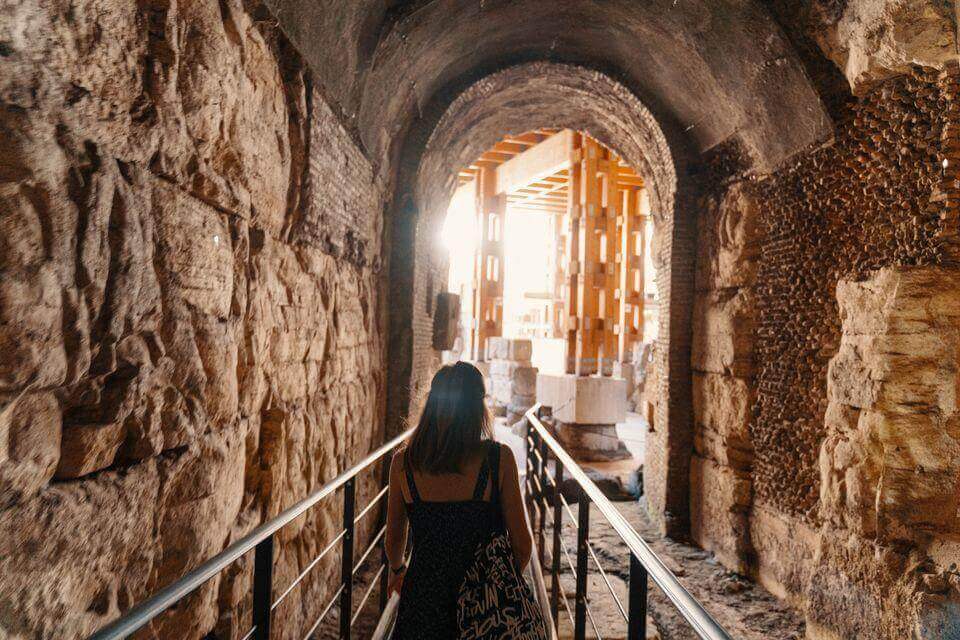
Some of the top sights to see at the Colosseum today:
The Exterior:
The Colosseum’s exterior is an architectural marvel. One of the most recognizable structures in the world.
Take some time to appreciate the intricate details of the facade. Including the ornate arches, columns, and decorative stonework.
The Seating:
Although the seating structures are now largely destroyed. Visitors can still get a sense of the amphitheater’s impressive capacity by walking around the remaining tiers.
From here, you can also take in stunning views of the surrounding Roman Forum and Palatine Hill.
Trap Doors:
Although not accessible to visitors. The Colosseum’s underground passages and trap doors were used for gladiator and animal entrances during the spectacles.
First Tier:
The first tier of the Colosseum offers a close-up view of the structure’s architecture and the arena floor from above.
Visitors can also see the numbered arches used for crowd control and to indicate the seating arrangements of various social classes.
Second Tier:
The second tier provides a broader view of the Colosseum’s surroundings and the nearby ancient Roman Forum.
Third Tier:
From the third tier, visitors can enjoy a panoramic view of Rome and its landmarks. including the Arch of Constantine and Palatine Hill.
Gladiator’s Gate:
The Gladiator’s Gate is located on the east side of the Colosseum. It was the entrance used by the gladiators to enter the arena.
The Emperor’s Box:
The Emperor’s Box is situated on the north side of the Colosseum. It offers a glimpse of the seating area reserved for the emperor and other high-ranking officials.
The Arch of Constantine:
Just outside the Colosseum, visitors can see the Arch of Constantine. A triumphal arch was built to commemorate Emperor Constantine’s victory over Maxentius in 312 AD.
The arch features intricate carvings and reliefs. It is a stunning example of Roman art and architecture.
The Exhibitions:
The Colosseum is home to several exhibitions. Those provide fascinating insights into the history of the amphitheater and the ancient Roman world.
From multimedia displays to ancient artifacts, these exhibitions are a must-see for anyone interested in Roman history.
Not just because it’s a stunning architectural marvel that has stood the test of time. This ancient wonder has a rich and complex history. That makes it a symbol of power, oppression, and even redemption.
From gladiator battles and mock sea battles to public executions and even as a source of building materials, the Colosseum has seen it all.
But it’s not just a relic of a brutal and violent past – it’s also a testament to the resilience of the human spirit. A reminder that even the most devastating events in history can ultimately lead to progress and growth.
End Note
And there you have it, folks! The Colosseum Underground and Arena Floor. A place of blood, sweat, and tears. But also a site of incredible engineering and innovation.
We’ve learned that beneath the glitz and glamour of the games, lay a complex system of tunnels and chambers. It kept the show running smoothly.
We’ve discovered how the Colosseum was more than just a venue for entertainment. This site is a tool of propaganda and control for the Roman empire.
From Hollywood blockbusters to video games and pop culture, the Colosseum has become a symbol of strength, endurance, and perseverance.
And as we look toward the future, we can only imagine what wonders and mysteries this incredible structure still has in store for us.

